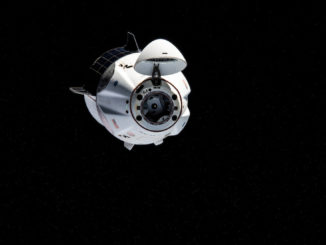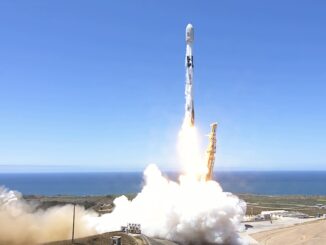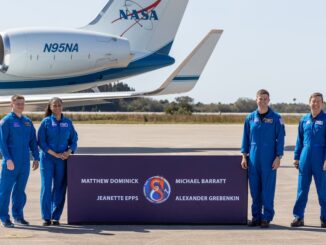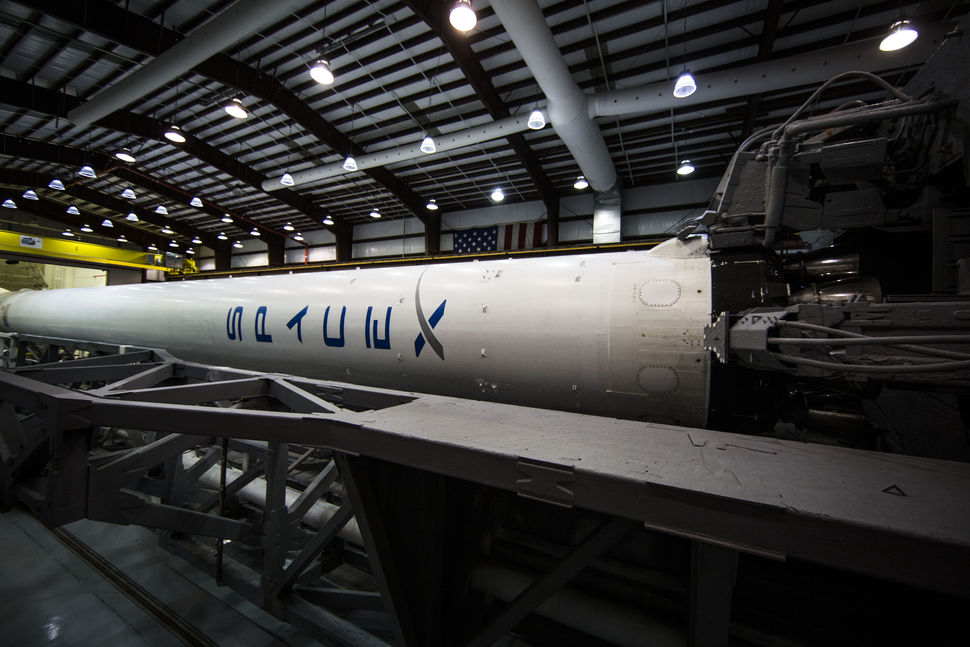
The next launch in SpaceX’s busy manifest this year is scheduled for March 21, when a Falcon 9 rocket will take off from Cape Canaveral and deliver Turkmenistan’s first satellite into orbit.
The liftoff from SpaceX’s Complex 40 launch pad on Florida’s Space Coast will mark the Falcon 9 rocket’s fourth flight of more than a dozen missions on the docket for 2015.
The satellite arrived at Cape Canaveral on Feb. 26 aboard a cargo plane after a trans-Atlantic journey from its factory at Thales Alenia Space in Cannes, France.
Since touching down in Florida, the spacecraft was supposed to undergo final testing and technicians planned to fill it with liquid propellant for in-space maneuvers. Then the two clamshell-like halves of the Falcon 9 rocket’s 17-foot-diameter payload shroud will enclose the satellite before rollout and attachment to the launcher.
Components for the Falcon 9 rocket are also at Cape Canaveral, and work inside SpaceX’s hangar at the Complex 40 launch pad shifted focus to the upcoming flight after the last launch March 1 with a pair of Boeing-built communications platforms for Eutelsat and Asia Broadcast Satellite.
Thales Alenia Space is the customer for the March 21 launch, but the spacecraft manufacturer will hand over control of the satellite to the government of Turkmenistan once it is safely in orbit.
The spacecraft’s official name is TurkmenAlem52E/MonacoSat, in homage to the satellite’s end user and its operating post in space in geostationary orbit at 52 degrees east longitude.
Monaco has rights to the 52 degrees east slot to be occupied by the Turkmen satellite. In exchange for permitting the spacecraft to reside there, Monaco’s government secured the use of 12 Ku-band transponders on the satellite.
Luxembourg-based satellite operator SES signed an agreement with Space Systems International Monaco, an entity licensed by Monaco’s government, to commercialize the 12 Ku-band transponders.
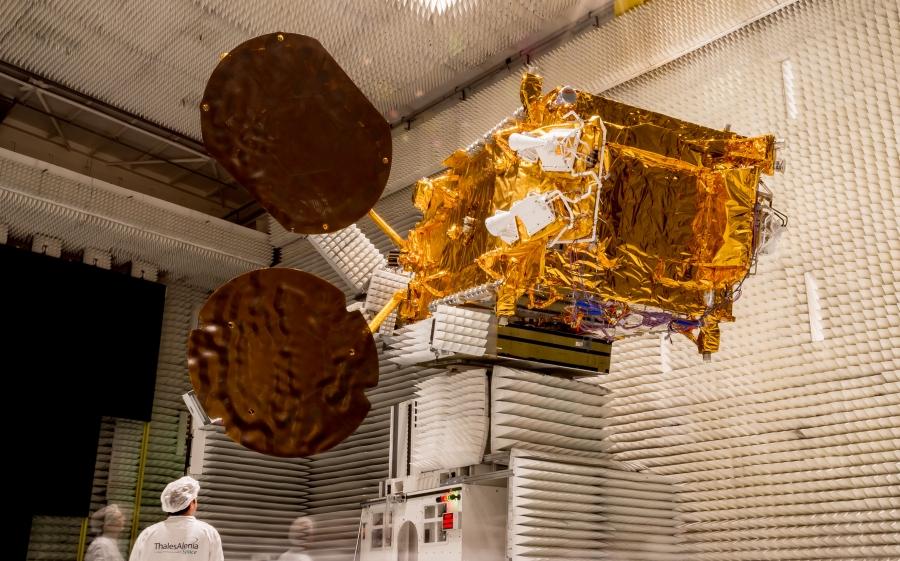
Liftoff of the TurkmenAlem52E/MonacoSat satellite is planned for March 21, less than three weeks since SpaceX’s last launch. If the mission blasts off on time, it will mark SpaceX’s fourth space launch in 10 weeks.
A Thales spokesperson said the launch window for March 21 is still being finalized.
The two-stage Falcon 9 rocket will deploy the spacecraft into an arcing transfer orbit with a high point thousands of miles above Earth. The distant orbit, coupled with the satellite’s heavy weight, will keep the launcher from performing an experimental flyback maneuver to test out a concept SpaceX hopes will eventually lead to the booster’s reusability.
The next chance to try that sporty experiment will come with the launch of SpaceX’s commercial Dragon supply ship to the International Space Station, a flight currently set to take off around April 10.
With a launch weight of about 4,500 kilograms — 9,920 pounds — the satellite is based on the Spacebus 4000 C2 spacecraft bus built by Thales Alenia Space. It is designed for a 15-year service life.
“Once operational in orbit, TurkmenAlem52E/MonacoSat will allow Turkmenistan to operate its first national satellite telecommunications system, ensuring enhanced, secure telecommunications for the country,” Thales wrote in a mission summary posted on the company’s website.
The satellite will reach users across Central Asia, Europe and Africa.
Thales said it built the satellite and had it ready for shipment in 27 months. The launch was set for November 2014, but delays in SpaceX’s manifest kept the satellite from launching until this month, according to Thales.
As part of its contract with the Turkmenistan Ministry of Communications, Thales manufactured the spacecraft, provided ground support equipment for two satellite control stations, selected SpaceX as the launch services provider and procured insurance coverage.
Thales also trained Turkmen engineers to operate the satellite once it is in orbit.
SpaceX and Thales announced the satellite and launch deals in June 2013.
Follow Stephen Clark on Twitter: @StephenClark1.

